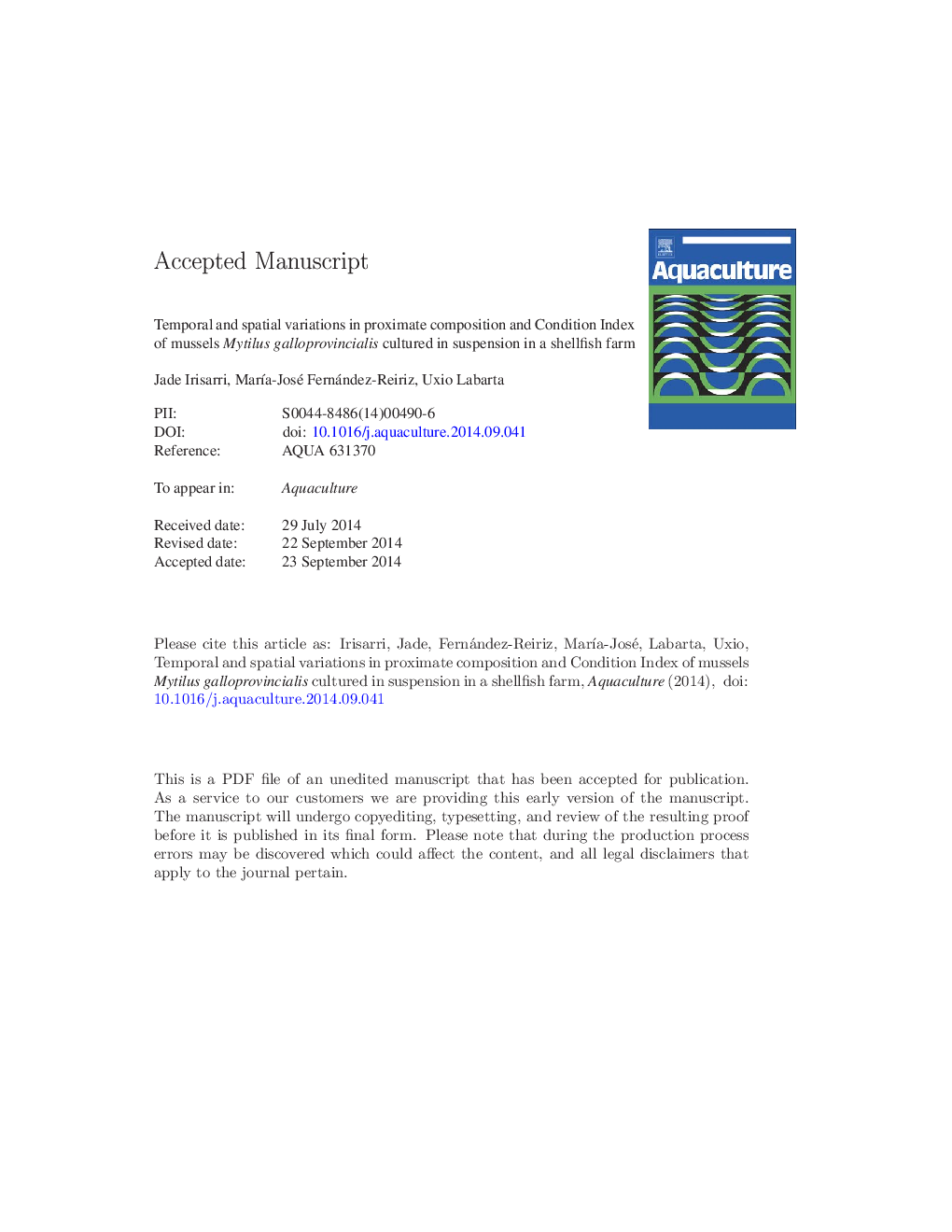| Article ID | Journal | Published Year | Pages | File Type |
|---|---|---|---|---|
| 8494889 | Aquaculture | 2015 | 35 Pages |
Abstract
We compared the seasonal variations in Condition Index (CI) and proximate composition of the mantle and the digestive gland of mussels (Mytilus galloprovincialis) cultivated at outer and inner regions of a raft polygon. The results are discussed in the context of the energy balance. The proximate composition and CI varied with the seasonal fluctuations in seston composition and the reproductive cycle described for the Galician RÃas. Seston's nutritional quality peaked during the spring bloom and descended during winter downwelling. Proteins were first depleted in the gland during autumn, while the mantle maintained high levels until summer. Similarly, lipids were highest in the mantle during winter and decreased following the spring spawning, suggesting transference of reserves from the gland to the mantle to support gametogenesis. In contrast, glycogen was stored in the mantle during the summer and exhausted during winter, when food % POM was lowest. This opposite pattern suggested that glycogen was probably converted to lipids during gamete development. The variations in CI significantly correlated with the accumulation and expenditure of reserves. Mussels harvested in autumn had the highest CI and biochemical reserves, while minimum CI was in winter, when mussels had a low energy balance. Resuspension events in autumn-winter significantly diluted the particulate organic matter suspended at the innermost raft (38.91% POM) compared with the outer raft (60.52% POM). This was reflected in short-term reductions in CI, proteins' and lipids' reserves in innermost mussels. These temporal increases in turbidity did not seem to significantly affect bivalves' proximate composition and meat yield over a longer time scale.
Related Topics
Life Sciences
Agricultural and Biological Sciences
Aquatic Science
Authors
Jade Irisarri, MarÃa-José Fernández-Reiriz, Uxio Labarta,
